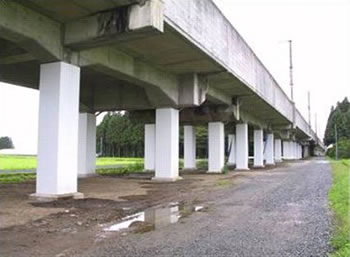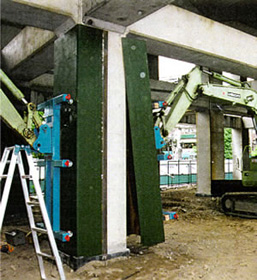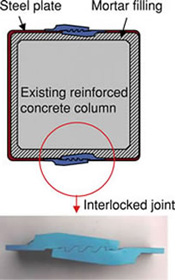Press Releases(Archive)
Progress of Aseismatic Reinforcement Measures
Supplement 1
JR East carried out aseismatic reinforcement measures in Minami Kanto, Sendai and other areas following
the Hanshin Awaji Earthquake that struck on January 17, 1995. Emergency aseismic reinforcement measures
had been completed for Shinkansen lines by fiscal 1998, and for conventional lines by fiscal 2000.
Following the Sanriku-Minami Earthquake, which struck on May 26, 2003, aseismic reinforcement plans
that included areas outside emergency aseismic reinforcement areas were drawn up for the Shinkansen lines,
and work was proceeding with the aim of completion by fiscal 2008. However, following the earthquake
in Chuetsu, Niigata Prefecture last year, the reinforcement schedule has been moved up a year to completion
by fiscal 2007, and work is currently proceeding at a feverish pitch. Of these measures, aseismic reinforcement
of rigid-frame viaduct columns in locations where the space below the viaducts is not used was completed
by the end of September 2005.
The table below shows the progress of aseismic reinforcement measures for Shinkansen and conventional lines
as of the end of September 2005.
- Shinkansen lines (all areas)

- Conventional lines (emergency aseismic reinforcement measures area)

* Aseismic diagnosis was performed on all viaduct columns, and columns of the type that experience shear breaks first were judged as requiring aseismic reinforcement.
• Example of Steel Plate Reinforcement

View of completed steel plate reinforcement (Tohoku Shinkansen, No. 5 Inohana Viaduct)
• Steel Plate Reinforcement Work Procedure
Temporary removal of fences, etc. → Reinforcement of underground portions → Wrapping with steel plate → Mortar filling → Painting the steel plate → Restoration of fences
 Steel plate reinforcement work conditions
Steel plate reinforcement work conditions Overview of steel plate reinforcement
Overview of steel plate reinforcement